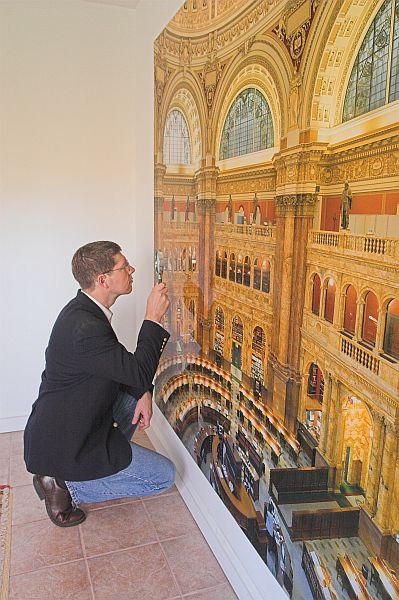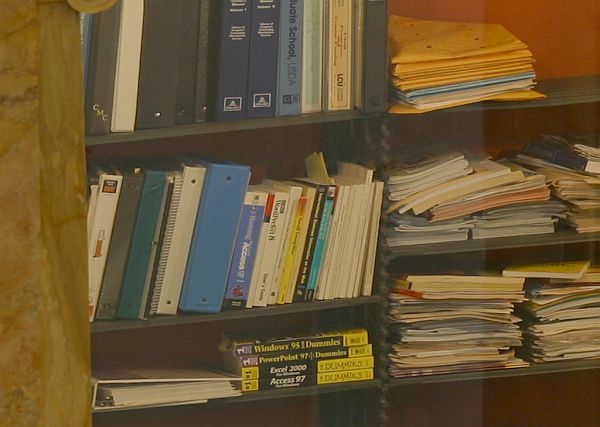Technical Details
This page contains a certain amount of technical detail in response
to the large number of professionals and amateurs interested in
learning more about my techniques. For discerning viewers, however,
these technical comments will not obscure the fact that these
techniques are designed to serve my primary objective of creating
a completely new type of artistic experience. By introducing a new
level of detailed, artistic observation to the subject, I hope
to help viewers progress from simply pressing their noses against
the window to actually stepping inside the worlds of both natural
and man-made beauty.
All of the images presented here were created by piecing together hundreds
of individual photographs--similar to the way in which individual tiles
are assembled to create a larger mosaic. The process of correctly
aligning photographs that have been taken in a sequence isn't as simple as
just joining them together. Objects at the edges of adjacent images don't line
up correctly. Align the top halves of two images and the bottom halves
aren't aligned; Align the bottom half, and the tops are misaligned.

The solution to this problem involves computer processing to manipulate the
images in just the right way that allows them to be perfectly aligned.
Further processing is needed to blend each image with its neighbor, producing
a completely seamless final composite with no evidence that any images have
ever been joined. The process involves several different computer software
programs and considerable manual work, sometimes taking days or weeks before
the final image is created.

The reason for spending so much time and effort is simple: Detail. The images
shown here contain up to 2,000 megapixels...vastly more detail than conventional
photographs. (A pixel is the smallest unit of detail that a digital camera can
capture). These prints contain about 100 times more detail than today's
professional level cameras, and 200 times as much detail as consumer level
cameras. The difference in printed image clarity and detail is astounding.
Film cameras cannot produce images of this quality either...not even
the 8x10 or larger format cameras used by landscape photographers.
Relatively poor lens quality, and other factors conspire limit
the amount of detail captured with large format cameras, optimistically
high scanning resolutions not withstanding.
The images shown on this site are all suitable for printing at sizes
with a long dimension of at least 10 feet. For ultimate clarity, they
are printed at 300 pixels per inch on a Lightjet printer. These
"Digital C-Prints" are face-mounted onto plexiglass, and sealed
from behind with a rigid backing material. The prints do not have any
external frame, providing a simple, unadorned view of the print. An aluminum frame mounting
structure allows the print to be hung on the wall.